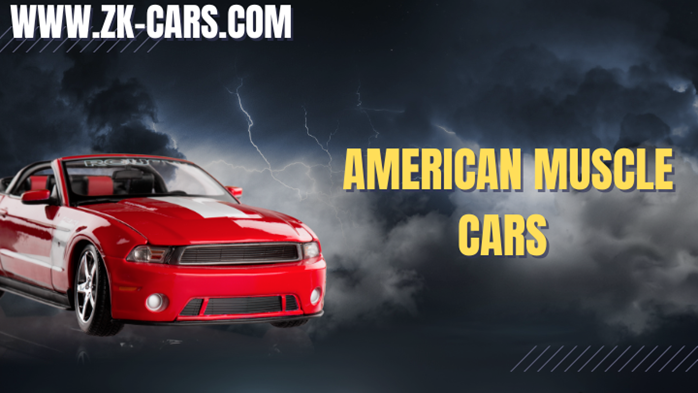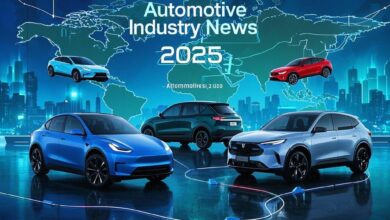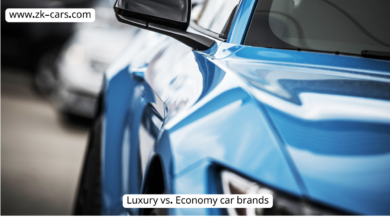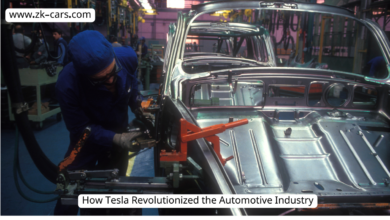American Muscle Cars

American muscle cars have long been a symbol of raw power, aggressive styling, and performance that makes adrenaline rush through the veins of any car enthusiast. These iconic vehicles are more than just cars—they are cultural icons that have defined eras, influencing everything from movies to music, and shaping the automotive industry itself. Let’s dive into the world of American muscle cars, tracing their history, what makes them so special, and why they continue to captivate drivers today.
1. What Are American Muscle Cars?
American muscle cars are typically characterized by their high-performance engines, especially the V8 engine, and their ability to achieve quick acceleration. The term “muscle car” refers to vehicles that boast large, powerful engines, lightweight bodies, and a rear-wheel-drive layout, built primarily for straight-line speed and performance. These cars were most prominent during the 1960s and early 1970s, often referred to as the “Golden Age” of muscle cars.
Key Features of Muscle Cars:
- Big, high-horsepower engines (typically V8)
- Lightweight bodies designed for speed
- Aggressive styling with bold lines and muscular design
- Rear-wheel drive for optimal performance in acceleration
- Two-door configuration, often with limited space in the rear
- Built for speed and power, not necessarily for comfort or handling
2. The Birth of American Muscle Cars
The story of American muscle cars begins in the mid-1940s and 1950s when auto manufacturers began experimenting with performance-enhanced vehicles. However, the true birth of the muscle car is often attributed to the release of the Pontiac GTO in 1964. While other manufacturers had powerful vehicles on the market before, Pontiac’s GTO was different—it was affordable, accessible, and offered high performance to the average consumer.
This car launched a trend that spread quickly across the U.S. auto industry, with major automakers like Ford, Chevrolet, Dodge, and Plymouth entering the race to produce the most powerful and visually striking muscle car.
Popular Early Muscle Cars:
- 1964 Pontiac GTO
- Ford Mustang (1964.5)
- Chevrolet Camaro (1967)
- Dodge Charger (1966)
3. The Golden Age of American Muscle Cars
The late 1960s and early 1970s are often referred to as the “Golden Age” of muscle cars. During this period, the competition among automakers to build the most powerful muscle car reached its peak. The demand for performance cars soared, and each new model that hit the market was bigger, bolder, and faster than the last.
Cars like the Chevrolet Chevelle SS, the Dodge Challenger, and the Plymouth Barracuda were synonymous with power, freedom, and rebellion, helping to cement their status as American legends.
Iconic Cars from the Golden Age:
- Chevrolet Chevelle SS 454: Known for its brutal power, with some models pushing over 450 horsepower.
- Dodge Charger R/T: Popularized by movies and TV shows, including “The Dukes of Hazzard” and the “Fast & Furious” series.
- Ford Mustang Mach 1: A blend of style and performance that captured the spirit of the late 1960s.
- Plymouth Hemi ‘Cuda: Featuring Chrysler’s legendary 426 HEMI engine, this car was a beast on the drag strip.
4. The Decline and Revival of American Muscle Cars
By the mid-1970s, the American muscle car scene began to decline. Several factors contributed to this, including stricter government regulations regarding fuel efficiency and emissions, a rise in gas prices, and changing consumer preferences that shifted toward smaller, more fuel-efficient cars. Many automakers scaled back production on their muscle car models, and some iconic cars disappeared altogether.
However, by the early 2000s, American muscle cars made a strong comeback. Brands like Ford, Chevrolet, and Dodge revived their classic models, incorporating modern technology and engineering while retaining the aggressive styling and powerful engines that made the originals so popular. Cars like the Dodge Challenger, the Chevrolet Camaro, and the Ford Mustang reignited the muscle car spirit for a new generation of drivers.
Modern Muscle Cars:
- Ford Mustang GT: Features a 5.0L V8 engine capable of producing 450 horsepower, delivering modern performance with classic muscle car appeal.
- Dodge Challenger SRT Hellcat: With a supercharged 6.2L HEMI V8 producing 717 horsepower, this modern muscle car takes power to the extreme.
- Chevrolet Camaro SS: Boasts a 6.2L V8 engine delivering 455 horsepower, blending raw power with advanced technology.
5. Why American Muscle Cars Still Matter Today
American muscle cars continue to captivate car enthusiasts due to their blend of heritage, performance, and modern technology. What makes them stand out in today’s market is their unwavering dedication to providing an exhilarating driving experience that goes beyond mere transportation. The throaty roar of a V8 engine, the powerful thrust of acceleration, and the bold, muscular design are aspects that appeal to the senses in a way few other cars can.
Muscle cars are also seen as symbols of American culture. They represent a bygone era of automotive excess, freedom, and rebellion, yet they remain relevant thanks to their constant evolution and innovation.
Key Reasons for Their Continued Popularity:
- Nostalgia: For many, driving a muscle car is a way to connect with the past and relive the glory days of American automotive history.
- Performance: Modern muscle cars are just as powerful as their predecessors, if not more so, thanks to advancements in engine technology and aerodynamics.
- Customization: The muscle car culture thrives on personalization. Enthusiasts often modify their cars, adding custom exhausts, suspension upgrades, and performance chips to enhance speed and appearance.
- Iconic Design: Bold, muscular lines continue to set muscle cars apart from the sleek, minimalist designs of modern sedans and electric vehicles.
Conclusion
American muscle cars are more than just vehicles—they are symbols of power, speed, and freedom. From the roaring engines of the 1960s to the high-tech beasts of today, these cars hold a unique place in automotive history. They have survived fuel crises, government regulations, and shifts in consumer preferences, evolving into the modern powerhouses we see on the roads today. Whether you’re a fan of the classics or you prefer the advanced features of today’s muscle cars, there’s no denying that American muscle cars continue to hold a special place in the hearts of car enthusiasts worldwide.




